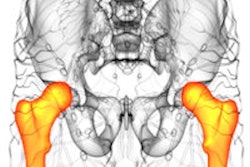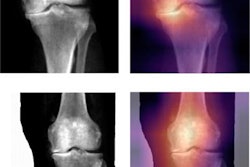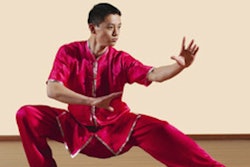
Qigong exercise training may be an effective therapy for people with healed second- and third-degree thermal burns, according to a study published March 29 in Burns.
Physical therapists led by Eman Othman, PhD, of Cairo University in Egypt, used dual-energy x-ray absorptiometry (DEXA) scans to show that Qigong helped increase bone mineral density in patients recovering from burns more than standard physical therapy alone. They suggested Qigong may be an effective adjuvant therapy.
"Qigong training activities combined with a standard physiotherapy regimen for two months were more helpful in increasing bone mineral density and improving balance control than the standard physiotherapy regimen alone," the group wrote.
Decreased bone mineral density (BMD) and balance are common conditions after burn injuries. Proinflammatory cytokines increase within two days of burn injury, activating osteoclasts and leading to excessive bone resorption. In addition, burn consequences such as hospitalization for an extended period, inadequate nourishment, pain, and neuropathy can all affect balance control, the authors explained.
Qigong -- which mixes aerobics, isometrics, isotonic, meditation, and relaxation in a self-management healthcare approach -- may be a good alternative exercise strategy for preventing falls in post-burn patients by reducing bone loss, improving balance performance, and increasing confidence, the authors hypothesized.
Thus, the researchers investigated the additive effects of selected Qigong training exercises for two months to standard physiotherapy on BMD and balance control in patients with healed second- and third-degree thermal burns of the trunk and lower limbs.
They enrolled 110 participants (75 males and 35 females) between the ages of 25 and 50 with deep second- and third-degree thermal burns over 30%-45% of the trunk and lower limbs. The participants were split into two equal groups: half had Qigong training along with its standard physiotherapy regimen and the other half had only a standard physiotherapy regimen.
For eight weeks, the interventions were used four times a week. DEXA scan T-scores were used to measure BMD, while changes in balance were assessed using the dynamic limits of stability (DLOS) protocol and balance overall stability index (OSI), with a high reading of the latter indicating difficulty in a patient's ability to maintain balance in all directions.
The analysis revealed no significant difference between groups in the baseline. After eight weeks of therapy, when compared with the control group, the study group had a significant increase in BMD T-scores (-1.01 vs. -2.17) and DLOS, as well as a significant decrease in OSI, the authors reported.
To the authors' knowledge, this is the first study to investigate links between Qigong exercise practice, BMD, and balancing abilities in burn patients. As such, the findings are restricted in terms of generalization to all patients with thermal burns because the patients in this study were adults with profound second and third-degree thermal burns, they noted.
"Qigong exercise training may be an effective adjuvant therapy in the treatment of people with healed second and third-degree thermal burns of the trunk and lower extremities," the authors concluded.



















